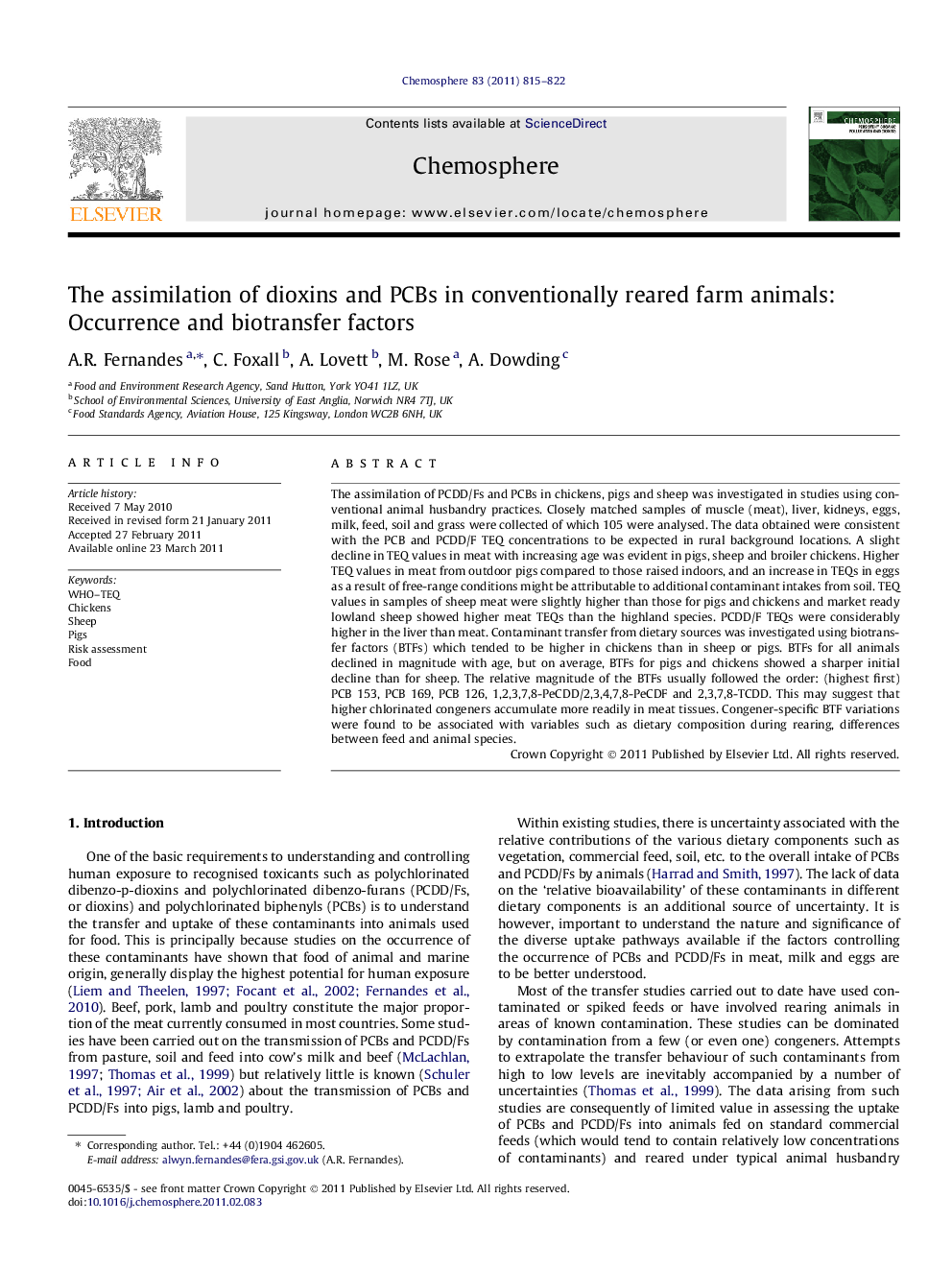| Article ID | Journal | Published Year | Pages | File Type |
|---|---|---|---|---|
| 4410745 | Chemosphere | 2011 | 8 Pages |
The assimilation of PCDD/Fs and PCBs in chickens, pigs and sheep was investigated in studies using conventional animal husbandry practices. Closely matched samples of muscle (meat), liver, kidneys, eggs, milk, feed, soil and grass were collected of which 105 were analysed. The data obtained were consistent with the PCB and PCDD/F TEQ concentrations to be expected in rural background locations. A slight decline in TEQ values in meat with increasing age was evident in pigs, sheep and broiler chickens. Higher TEQ values in meat from outdoor pigs compared to those raised indoors, and an increase in TEQs in eggs as a result of free-range conditions might be attributable to additional contaminant intakes from soil. TEQ values in samples of sheep meat were slightly higher than those for pigs and chickens and market ready lowland sheep showed higher meat TEQs than the highland species. PCDD/F TEQs were considerably higher in the liver than meat. Contaminant transfer from dietary sources was investigated using biotransfer factors (BTFs) which tended to be higher in chickens than in sheep or pigs. BTFs for all animals declined in magnitude with age, but on average, BTFs for pigs and chickens showed a sharper initial decline than for sheep. The relative magnitude of the BTFs usually followed the order: (highest first) PCB 153, PCB 169, PCB 126, 1,2,3,7,8-PeCDD/2,3,4,7,8-PeCDF and 2,3,7,8-TCDD. This may suggest that higher chlorinated congeners accumulate more readily in meat tissues. Congener-specific BTF variations were found to be associated with variables such as dietary composition during rearing, differences between feed and animal species.
► Transfer and uptake of PCDD/Fs and PCBs into animals. ► Discussion on Occurrence levels. ► Bio-transformation factors.
